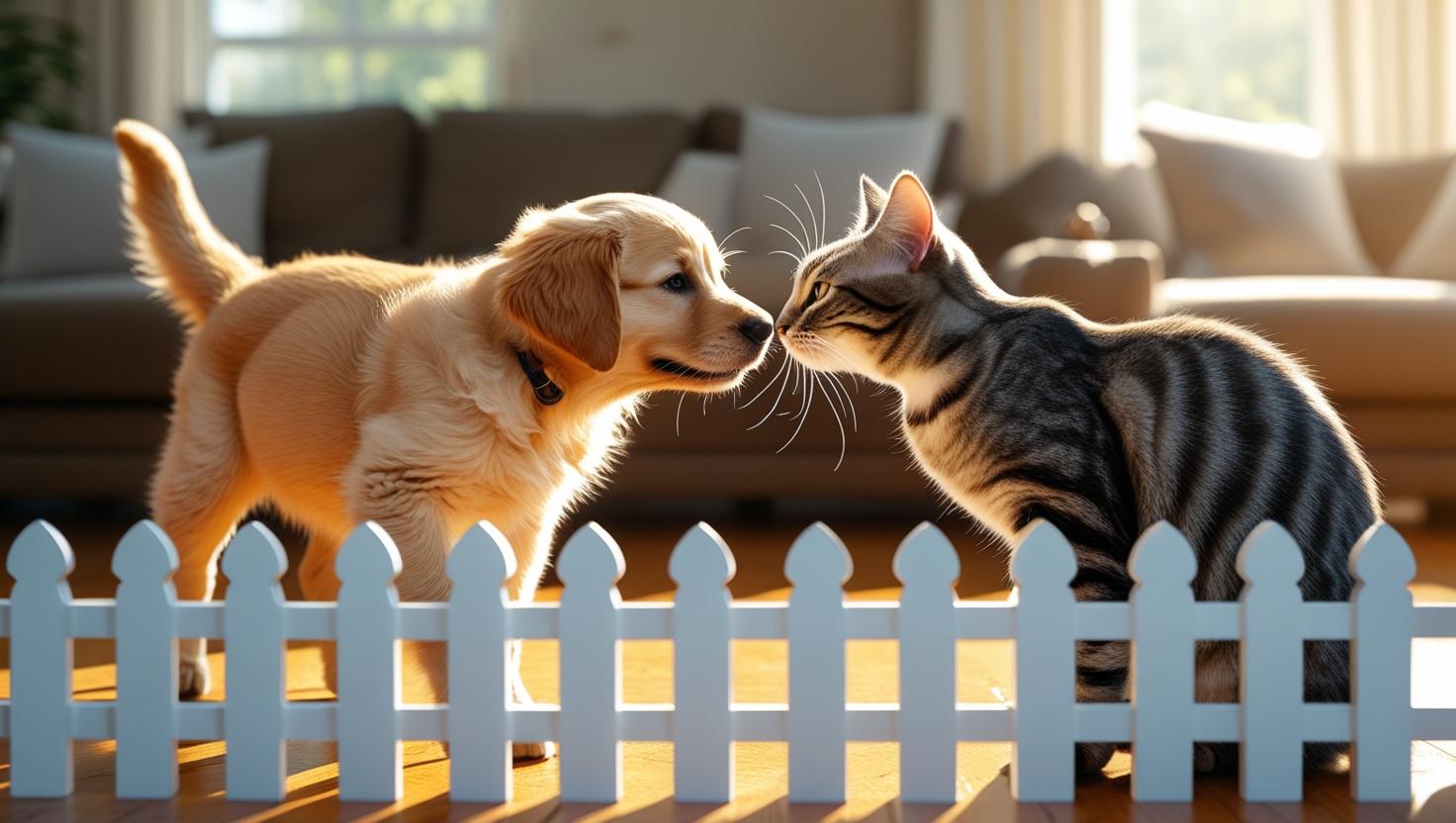The Importance of Safe Step Introductions
Every pet has its own personality and way of communicating. Puppies, with their energy and curiosity, can leave resident pets feeling anxious, as they want to protect their space. Understanding these differences and taking things slow is important to avoid fights and help everyone get along.
Studies demonstrate that puppies introduced to cats gradually, especially before 12 weeks of age, are more likely to establish calm and even affectionate bonds with their feline companions.
Step-by-Step Guide for a Seamless Introduction
Prepare Safe Spaces Before Arrival
Make sure every pet, including the new puppy, has its own space. This includes a comfortable bed, food bowl, toys, and a resting area. Baby gates or pet barriers are helpful for them to get used to each other’s scents while maintaining a safe distance at first.
- Start with Scent Exchange
Before any direct interaction, swap blankets or toys between the pets. Familiarizing them with each other’s scents in a gentle way helps alleviate initial anxieties. This technique is widely recommended by animal behavior specialists.
- Allow Visual Contact with a Barrier
Use a gate or barrier to let the pets observe one another for brief periods. Reward calm and relaxed behaviors with treats and praise. Repeat these sessions daily, gradually increasing the duration as the pets become more comfortable.
- Meet on Neutral Ground (For Dogs)
When introducing two dogs, start their meetings outdoors in a neutral space. Walk them side by side on loose leashes. Once both show signs of relaxation, allow for brief interactions indoors under supervision.Safe Indoor Interactions
Over time, arrange short and safe meetings indoors. Keep the puppy on a leash and allow the resident pet to approach only if they want to. For cats, let them observe from a distance or from a high spot; never force them to meet.Manage Resources to Prevent Rivalry
Feed pets separately and keep shared toys out of reach until they build trust. Each pet should have its own resting and feeding areas to minimize competition.Monitor Body Language Closely
Learn to identify signs of discomfort (stiff posture, growling, raised fur) and differentiate them from signs of relaxation (wagging tails, slow blinking, playful bows). If you notice tension, separate the pets and try again later.Provide Retreats and Escape Routes
Never force interaction. Always ensure that pets have the option to retreat to a safe space when needed. Respect natural signals—like growling or leaving the room—as indications that a break is necessary.Increase Time Together Gradually
After seeing multiple calm and positive encounters, you can allow them to play briefly off-leash, but keep a close watch. Gradually increase the time they spend together, allowing unsupervised interactions only after several successful sessions.
Checklist for a Successful Introduction
- Scent swapping for 3 to 7 days
- Visual meetings using a barrier
Joint explorations in neutral locations (for dogs)
- Begin direct indoor interaction only when both pets are calm
- Prevent conflicts over food, toys, and resting areas
- Careful monitoring of body language
- Always provide escape routes and safe spaces
Allow unsupervised contact only after multiple positive encounters
Why This Approach Works
This gradual and calm method respects the natural instincts of animals, reduces fear, and helps build trust at a comfortable pace. Research shows that being patient and careful leads to fewer conflicts and helps animals get along, regardless of their species or behavior.
